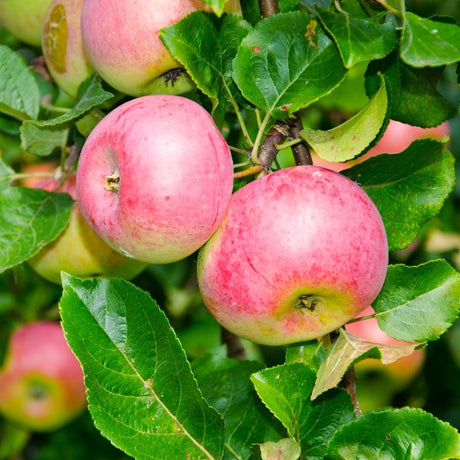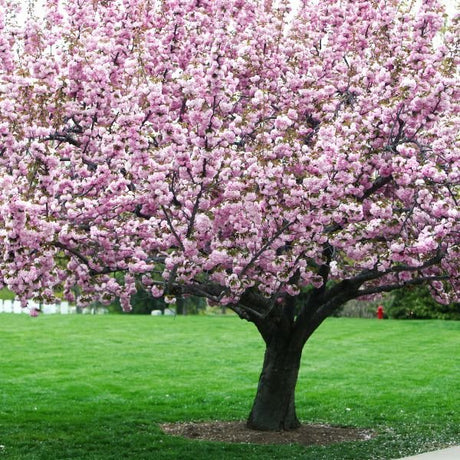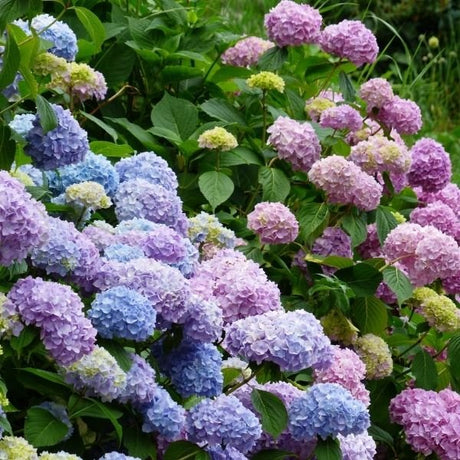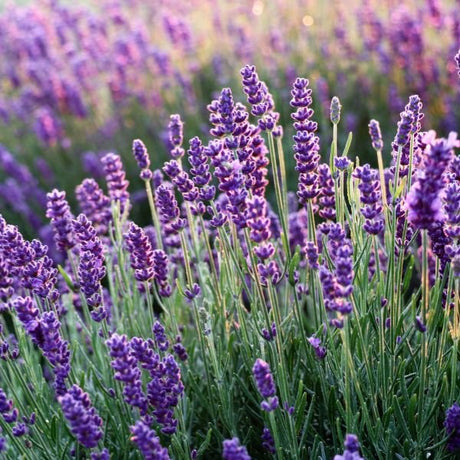Calamondin Orange Tree
Citrus madurensis Lour.'Calamondin'
- Stay Protected with Plant Sentry ™
Calamondin Orange Tree - 4x4x9 Inch Container is backordered and will ship as soon as it is back in stock.
Plant Sentry™
Plant Sentry™
Plant Sentry is designed to protect both consumers and the nursery trade from invasive plant pests and diseases. Sites that display the Plant Sentry protection badge are protected from consumers buying and nurseries shipping material carrying invasive pests and diseases.
This proprietary eCommerce software prevents the shipment of a restricted plant to each state. The Plant Sentry system includes a shipment certification program. The Plant Sentry Compliance Officer works closely with NatureHills.com and each nursery or fulfillment center to ensure only compliant plants are sold to customers.
Click Here to learn more

Delivery and Shipping
Delivery and Shipping
Shipping
To obtain a more accurate shipment time-frame, simply enter your zip code in the “Find Your Growing Zone” box to the right. Our plants are grown all over the country and lead time on items may be different because of this. Once your order is placed, you will also receive the specific shipment time-frame information as part of your order confirmation. Once an item ships, you will receive shipment notification and tracking numbers, so you can follow along while your plant travels to your doorstep. We use FedEx, UPS, or USPS at our discretion.
Due to winter weather we have put a hold on shipping to the areas shown below in grey. You can still order now and we will ship the plant to you during an appropriate time for your zone.
Standard Shipping Rates
At Nature Hills we handle, package and ship the products you order with the utmost care to ensure healthy delivery. Shipping and handling charges are calculated based on the tables below. Please note that some items include an additional handling surcharge, these will be noted on the item's product page.
| From | To | S&H |
|---|---|---|
| $0 | $19.99 | $24.99 |
| $20 | $49.99 | $29.99 |
| $50 | $69.99 | $34.99 |
| $70 | $99.99 | $39.99 |
| $100 | $129.99 | $44.99 |
| $130 | $149.99 | $48.99 |
| $150 | $150+ | Approx 28% |
Click here to see our full rates
Understanding Plant Options
Nature Hills offers plants in two main formats:
- Container Plants: Grown in pots with soil, sized by container volume and plant age
- Bare Root Plants: Dormant plants without soil, sized by height measurements
Container Plant Sizes
Container sizes indicate plant age and growing capacity rather than liquid volume equivalents. Our containers follow industry-standard nursery "trade gallon" specifications, which differ from standard liquid gallon measurements.
Young Plants (6 months to 18 months old)
| Container Size | Actual Volume | Metric Equivalent |
|---|---|---|
| 2" x 2" x 3" | 0.18 - 0.21 dry quarts | 0.20 - 0.23 dry liters |
| 4" Container | 0.31 - 0.87 dry quarts | 0.35 - 0.96 dry liters |
| 4.5" Container | 0.65 dry quarts | 0.72 dry liters |
| 6" Container | 1.4 dry quarts | 1.59 dry liters |
| 1 Quart | 1 dry quart | 1.1 dry liters |
| 5.5" Container | 1.89 dry quarts | 2.08 dry liters |
Established Plants (18 months to 2.5 years old)
| Container Size | Actual Volume | Metric Equivalent |
|---|---|---|
| 2 Quart | 2 dry quarts | 2.2 dry liters |
| #1 Container | 2.26 - 3.73 dry quarts | 2.49 - 4.11 dry liters |
| 5" x 5" x 12" | 3.5 - 4.3 dry quarts | 3.85 - 4.74 dry liters |
Mature Plants (2-4 years old)
| Container Size | Actual Volume | Metric Equivalent |
|---|---|---|
| #2 Container | 1.19 - 1.76 dry gallons | 5.24 - 7.75 dry liters |
| #3 Container | 2.15 - 2.76 dry gallons | 8.14 - 12.16 dry liters |
Large Plants (3-5 years old)
| Container Size | Actual Volume | Metric Equivalent |
|---|---|---|
| #5 Container | 2.92 - 4.62 dry gallons | 12.86 - 20.35 dry liters |
| #6 Container | 5.25 - 6.01 dry gallons | 23.12 - 26.42 dry liters |
| #7 Container | 5.98 - 6.53 dry gallons | 26.34 - 28.76 dry liters |
Bare Root Plants
Bare root plants are sold by height from the root system to the top of the plant. Plants may exceed minimum height requirements.
Common Sizes:
- Trees: 1 foot, 2 feet, 3 feet, 4 feet, 5 feet, 6 feet
- Shrubs & Perennials: 1 foot, 18 inches, 2 feet
Important Notes
Container Volume Specifications
- Trade Gallon Standard: Our containers follow industry-standard "trade gallon" specifications established by the American National Standards Institute (ANSI Z60.1) for nursery stock
- Volume Variations: Actual soil volume may vary due to plant root systems and growing medium settlement
- Age Indicators: Container size primarily indicates plant age and maturity rather than liquid volume equivalents
Growing Conditions
- Plant size can vary based on variety and growing conditions
- Container size helps indicate plant maturity and establishment level
- Larger containers generally mean more established root systems and faster landscape establishment
Seasonal Availability
- Bare root plants are available seasonally when dormant
- Container plants are available throughout the growing season
- Specific varieties may have limited availability in certain sizes
Questions?
For questions about specific plant sizes or availability, please contact our plant experts who can help you choose the right size for your landscape needs.
Plant Highlights
Calamondin Orange Tree highlights at a glance!
Specifications
Specifications
-
Brand
-
Botanical Name
-
Growing Zones
-
Mature Height
-
Mature Spread
-
Sun ExposureFull Sun
-
Moisture
-
Soil
-
Growth RateMedium
-
Pollinator Friendly
-
Pollinator Required
-
Fragrant
-
Pruning Time
-
Bloom PeriodLate Spring, Summer
-
Harvest Time
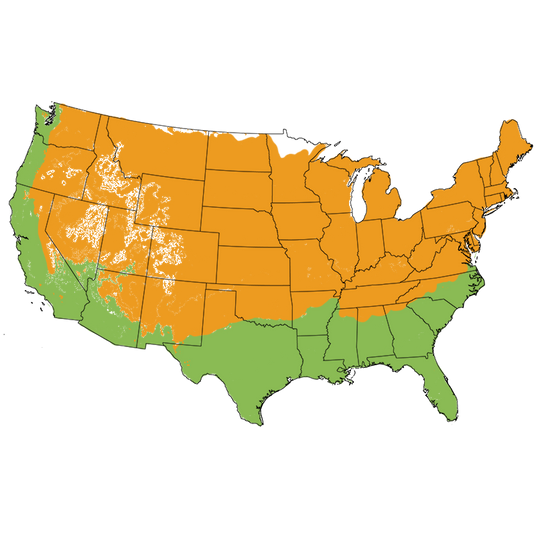
Growing Zones 8 - 11
Calamondin Oranges (Citrus madurensis Lour. 'Calamondin') are little tricksters! They look like oranges, just smaller. They smell like oranges when they are in bloom. They juice like oranges when they are sliced. But, all that enticing 'orangeness' gets tossed out the window when you taste one! The taste is much closer to a sour lime than a sweet orange!
In Florida in the '50s, Calamondin Orange trees were all the rage for the home landscape. You would often see stands selling a sweet, lemonade-like drink made with Calamondin instead of lemons. They make a great marmalade, too! The fragrant white flowers are a pollinator's favorite and you'll enjoy the year-round glossy evergreen leaves!
They can have flowers and fruit at the same time, so they make great specimens for greenhouse or indoor culture. Calamondin fruit is most often used in cooking to take the place of lemon or lime. These are a great substitute for anything you would use sour citrus for - fish, chicken, iced tea, Asian cuisine, baking, etc.
Planting and Application:
These trees have a nice shape which makes them standouts in the landscape or pruned smaller for use in the container. They are often used in ornamental bonsai. When the trees are in bloom they will perfume your entire house! Northern growers can enjoy these citrus trees as patio plants all summer, then bring them in for the winters.
The evergreen foliage and full-sized mature trees are fantastic for privacy and screening shading gardens and seating areas. When they're in full bloom and still dripping in orange gems, it's a sight to see for front yard landscaping! Cars are sure to slow down while driving by!
- Small Round Sweet/Sour Orange
- Gorgeous Fragrant White Blossoms
- Great Size for Containers
- Cooking, Juice & Preserves
- Handsome Glossy Evergreen Foliage
#ProPlantTips for Care:
Calamondin Orange tree care is easy! Just provide moderately moist, well-drained soil that is slightly acidic in a full sun location. Provide regular water for young trees, but once it has been established, keep it a little bit on the drier side.
Protecting Container Citrus From Cold
If you're growing these tropical trees in the ground in the lowest of their favored growing zones, they need to be planted in a sheltered spot to avoid the worst of the chill. If a spot like that is unavailable, then you are better off planting in a large, deep container.
In borderline growing zones, begin slowly acclimating your tree indoors or into a protected location, eventually moving your tree inside in bright indirect sun for the winter if the temperatures in your area ever dip below that 40°F range. In spring, reverse this process and begin acclimating your tree to again be back out in the full sun all summer. This reduces stress and leaf drop.
- Full Sun
- Moderate Moisture
- Well-Drained Acidic Soil
- Prune After Fruiting
- Provide Regular Fertilizer
Order your own Calamondin Orange Tree today! The sooner that you order, the sooner you can enjoy the conversation-starting fruit from these beautiful trees.
Calamondin Adds Flavor to Many Cultural Foods
Most likely a native of China, but most Calamondins are commonly grown for fruit in the Philippines. The fruit of this unique citrus variety has become an import part of many culture's cuisine around the world.
Considered one of the hardiest of the citruses, the Calamondin has become a popular ornamental throughout the world. Introduced into the Florida in about 1899, It became popular in both Florida and Texas mostly as an ornamental plant or rootstock. In the early 1960's, Florida greenhouse growers began marketing the Calamondin as a houseplant and in a short time spread the variety around the United States.
The beauty of the upright almost columnar habit of the tree, along with the fragrant flower and profuse fruit set year to year made the Calamondin a houseplant and landscape hit. in mild climates where citrus does well in the ground, Calamondins became a popular hedge plant or formal shrub. Calamondins make the perfect container plant for patios, which makes them ideal for cold climate citrus growers. Calamondins adapt well to being brought into the house and placed by a bright window for the winter.
Calamondins are served with food and drink as a lime substitute or preserved in syrup or as a marmalade, jelly or pickled and canned. The juice is valued for adding flavor to acid drinks and cocktails.





